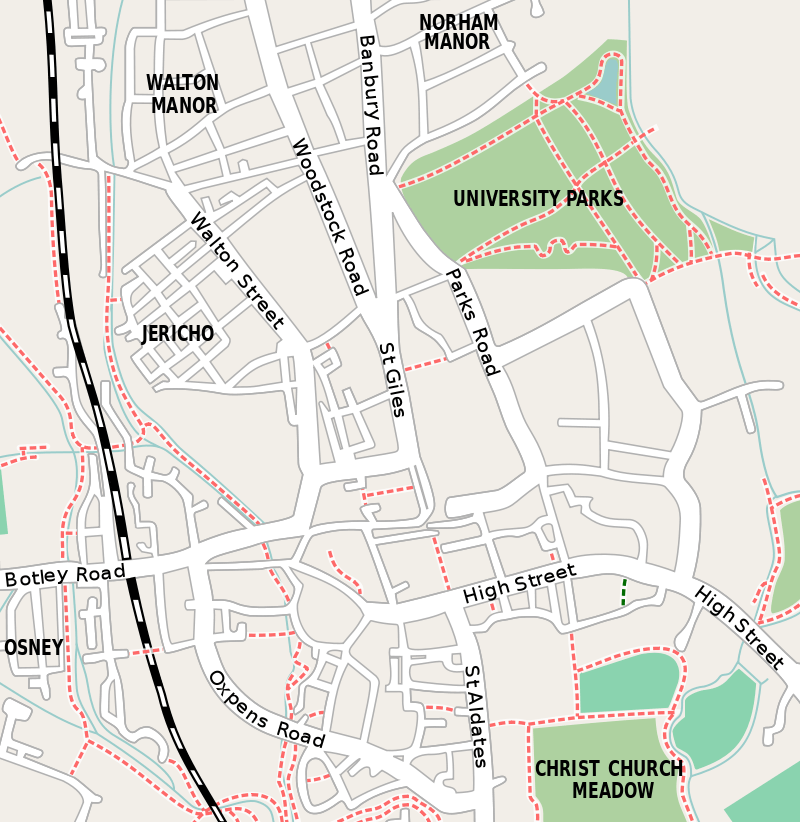Taylor Institution
 The Taylor Institute seen from the Martyrs' Memorial | |
| Country | United Kingdom |
|---|---|
| Type | Academic library |
| Established | 1845 |
| Location | St Giles', Oxford |
| Coordinates | 51°45′19″N 1°15′36″W / 51.7554°N 1.2600°W |
| Other information | |
| Director | James Legg |
| Website | Taylor Institution Library |

The Taylor Institution (commonly known as the Taylorian) is the Oxford University library dedicated to the study of the European Languages. Its building also includes lecture rooms used by the Faculty of Medieval and Modern Languages, University of Oxford. Since 1889 a prestigious Annual Lecture on a subject of Foreign Literature has been given at the Taylorian Institution.
History
The Taylor Institution was established in 1845, funded largely by a bequest from the estate of the notable architect Sir Robert Taylor (1714–1788). Modern European languages were not then taught at the University. (Not until 1903 were a Medieval and Modern Languages Faculty and Honours School instituted in Oxford.) Since the Bodleian lacked space, the Taylorian was initially used to house things as varied as Stubbs's lectures on English history and the Hope collection of butterflies.[1]
Description
The institution and its library are found in the east wing of a neo-classical building at the southern end of St Giles'. It was designed by Charles Cockerell to accommodate the institution and the University Galleries (now the Ashmolean Museum) and opened in 1845. The building was extended to the north along St Giles' to designs by T.H. Hughes in 1931 and 1938.[2]
The library serves, for the greater part, those studying for the degree of Bachelor of Arts, for the various Master's degrees, and for the D Phil. The collections include Modern European languages, among them French, German, Italian, Spanish, and Portuguese languages (including the South American Spanish language and the Brazilian Portuguese language) with a total of around five hundred thousand volumes. The Greek and Slavonic collections consist of European languages found further eastward, including the Greek, Slavic (including Russian), Uralic, and Albanian languages.
The library holds many world-class collections. Its holdings in German was started by Max Müller who bought many publications from Germany, among them many of Luther's Flugschriften, including the first edition of his Sendbrief vom Dolmetschen, and go up to contemporary German literature. Italian works run from Dante and Tasso through one of the largest collections of Giovanni Battista Guarini's seminal Il Pastor fido to Foscolo and Futurist manifestos. The Spanish and Portuguese collections contain early editions of Lope de Vega, Camoens, Cervantes, Góngora, Quevedo and Calderón. Russian first editions are well represented. The library's greatest strength, however, lies in its French holdings. Its collection of French Enlightenment authors stars the only complete collection in the world of all the French editions of Voltaire's Candide printed in 1759, the year of first publication.[3] The Taylorian also owns one of the only two known copies of the first edition of Benjamin Constant's Adolphe.
References
- ↑ Barber, Giles. "Europe in St. Giles'". Oxford Today. Vol. 5 No.1 (Michaelmas 1992). p. 12.
- ↑ "The Taylor Institution Conservation Plan". admin.ox.ac.uk. Retrieved on 2018-08-24.
- ↑ Barber 1992, p. 13.
External links

- Taylor Institution Library
- Brief history of the Taylorian building